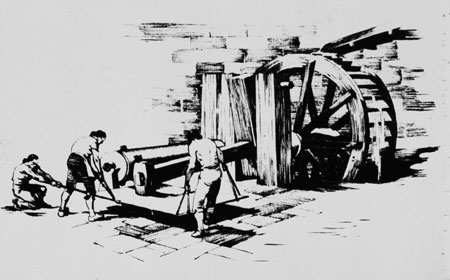
Manual — A power source for early rolling where small, hand-driven rolls flattened metals for jewelry and artwork. In later machines, men turned an adjustable cross or crank, which were attached to the rolls. Manual power could only roll softer metals like gold, silver, tin, and lead.
Water — Harnessing the energy of moving water from a river provided free power, strong enough to roll harder metals like iron. Water power had serious drawbacks: droughts and cold temperatures could reduce flow of water and the rolls moved in one direction only.

